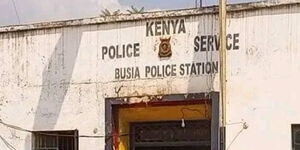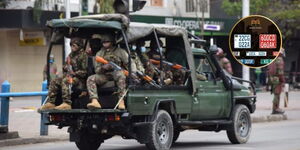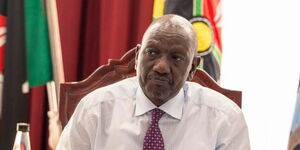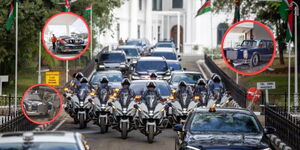In July 2022, the new Traffic Laws covering Drunk Driving and Vehicle Inspection took effect with a countrywide rollout expected in due course.
The National Transport and Safety Authority (NTSA), soon after, received a lot of questions regarding the new changes which directed that alco-blow be returned on Kenyan roads and vehicles four years older since their manufacture be subjected to regular inspection.
Here are the eight most pertinent questions and their answers by the authority;
1. Under what sections of The Traffic Act were the Draft Traffic (Drunk Driving Rules) 2022 and The Draft Motor Vehicle Inspection Regulations, 2022 developed?
Section 119 (g) and Section 119 (1) (na) of the Traffic Act Revised, Cap 403, 2012, gives the Cabinet Secretary for Transport, Infrastructure, Housing and Urban Development powers to formulate the regulations and rules respectively.
2. What specific amendments were made to the Act in matters relating to motor vehicle inspection?
Section 16 (2) of the Traffic Act before the amendments read as follows;
16 (2) Every vehicle more than four years old from the recorded date of manufacture shall be subjected to inspection by the motor vehicle inspection unit.
Traffic (Amendment) Act, 2021 now reads as follows;
16(2) Every vehicle more than four years old from the recorded date of manufacture shall be subjected to inspection at intervals to be determined by the Authority.
(3) An inspection under subsection (2) shall be conducted by the Authority or persons authorized by the Authority.
3. What necessitated the formulation of the Draft Motor Vehicle Inspection Regulations, 2022?
The Authority in undertaking its mandate has aligned its road safety policies and strategies to the Safe System Approach. The approach focuses on 5 pillars namely; safer people, safer roads, safer speeds, safer vehicles and post-crash care.
To advance the implementation of the Safe System approach specifically the safer vehicles pillar, there is a need to expand Kenya’s capacity in terms of validation of the roadworthy status of motor vehicles in addition to the assessment of the extent of implementation of various standards including vehicle body construction, speed management, among others.
To operationalize Section 16(2) and Section 16 (3) of the Traffic (Amendment) Act, 2021, Regulations to guide the motor inspection process must be in place, hence the development of the draft Motor Vehicle Inspection Rules 2022.
These amendments, therefore, provide the legislative framework for the outsourcing of motor vehicle inspection services to private entities.
4. What specific amendments were made to the Act in matters relating to driving under the influence of alcohol?
The Traffic Act, Cap 403, Section 44(1) reads as follows;
44(1). Any person who, when driving or attempting to drive, or when in charge of a motor vehicle on a road or other public place, is under the influence of a drink or a drug to such an extent as to be incapable of having proper control of the vehicle, shall be guilty of an offence and liable to a fine not exceeding one hundred thousand shillings or to imprisonment for a term not exceeding two years or to both.
The Traffic (Amendment) Act 2021 now reads as follows;
44 (1). Any person who, when driving or attempting to drive, or when in charge of a motor vehicle on a road or other public place, is under the influence of drink or a drug beyond the prescribed limits, shall be guilty of an offence and liable to a fine not exceeding one hundred thousand shillings or to imprisonment for a term not exceeding two years or to both.
5. What necessitated the formulation of the Draft Traffic (Drunk Driving) Rules?
Drink driving is a known public health concern and must be addressed using legislation that specifies the penalties for violation of prescribed limits and enforcement of laws accompanied by education and awareness initiatives.
The Operationalization of Section 44 (1) of the Traffic (Amendment) Act 2021 has been hampered by a lack of prescribed limits that set the maximum permissible legal limit of blood alcohol concentration. The amendments made in 2021 were to provide for an objective measure for the determination of drunk driving by establishing prescribed limits as opposed to the subjective test.
The purpose of the Traffic (Drunk Driving) Rules 2022 is to therefore provide the legal reference point for the implementation of Section 44(1) of the Traffic (Amendment) Act 2021.
6. What key areas do the Draft Traffic (Drunk Driving) Rules 2022 cover?
The rules highlight;
i) maximum permissible legal limit of blood alcohol concentration for drivers of public service vehicles, commercial service vehicles or school transport service vehicles and other types of drivers
ii) Alcohol prohibition and possible penalties
iii) Alcohol Testing Process by a police officer in uniform
iv) Breathalyzer device for breath specimen and its standards
v) Offenses in relation to refusal to provide a specimen
7. Are members of the public required to give their input on the two draft statutory instruments?
Article 2 of the Constitution of Kenya, demands the participation of the people in such matters hence the reasons for which the Authority on July 6, 2022, through a Public Notice titled “Submission of memoranda on the Draft Motorvehicle Inspection Regulations, 2022 and Draft Traffic (Drunk Driving) Rules, 2022" called for submission of views and comments.
Public engagement forums shall be communicated through a Public Notice at a later date.
8. Where can one download the two draft statutory instruments?
Members of the public are required to visit the NTSA website through www.ntsa.go.ke.
Go to the Notices Menu and download the respective documents. Submission of the memoranda (Views and Comments) should be sent to memoranda@ntsa.go.ke or sent through the post and addressed to the Director General of NTSA.












